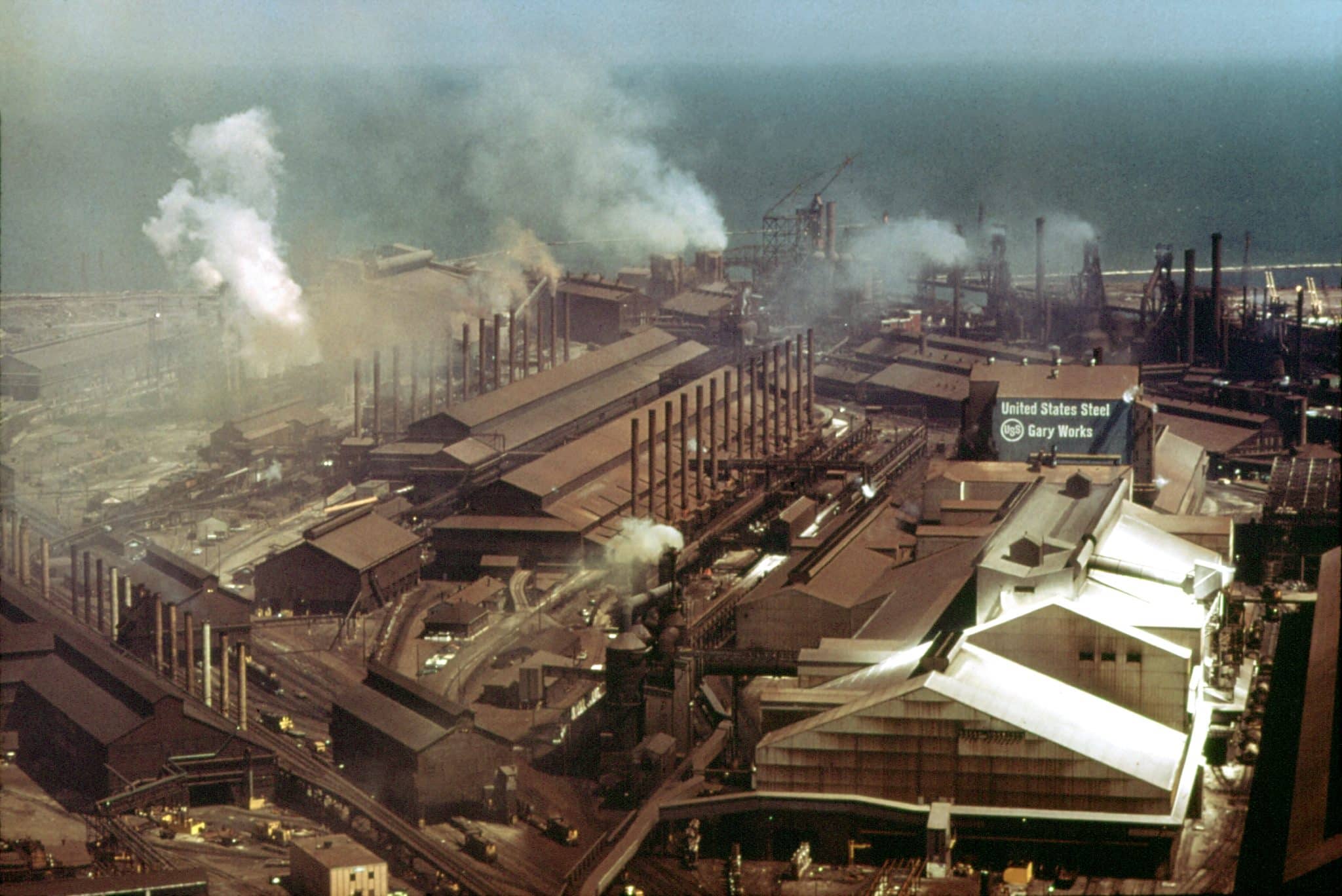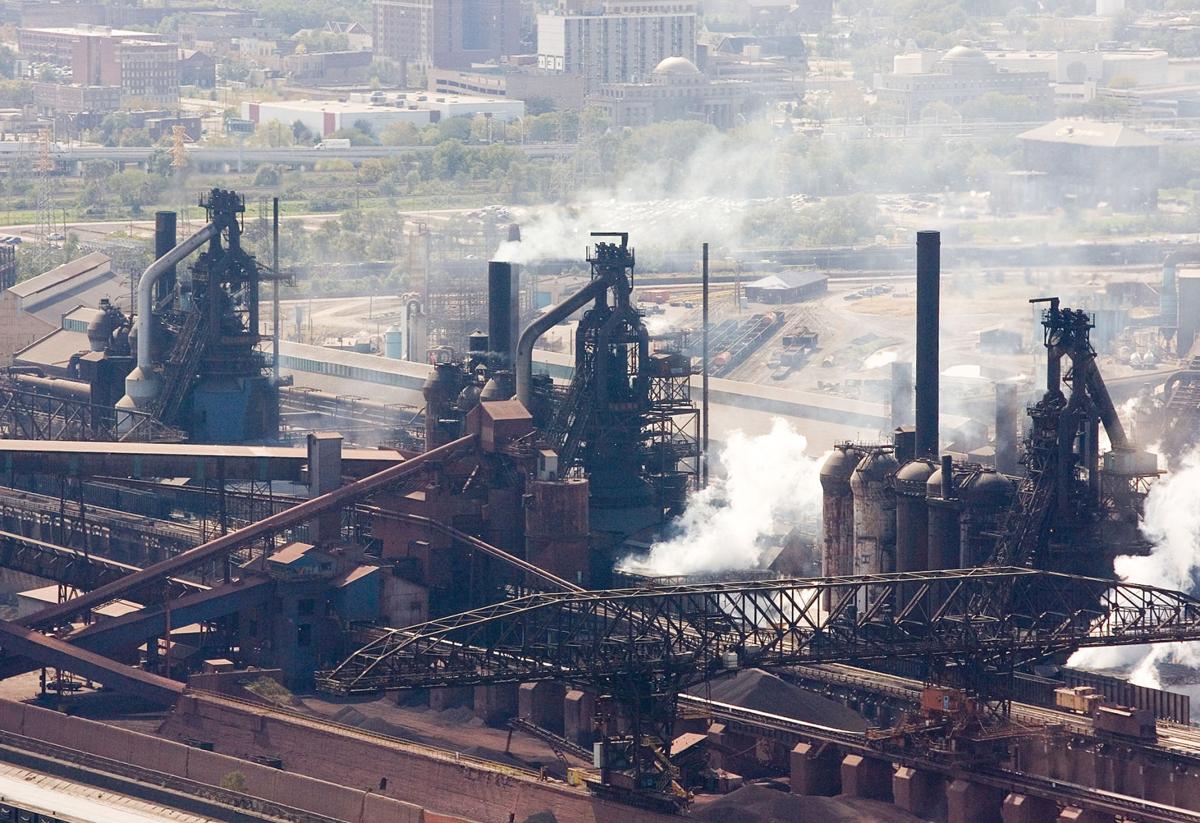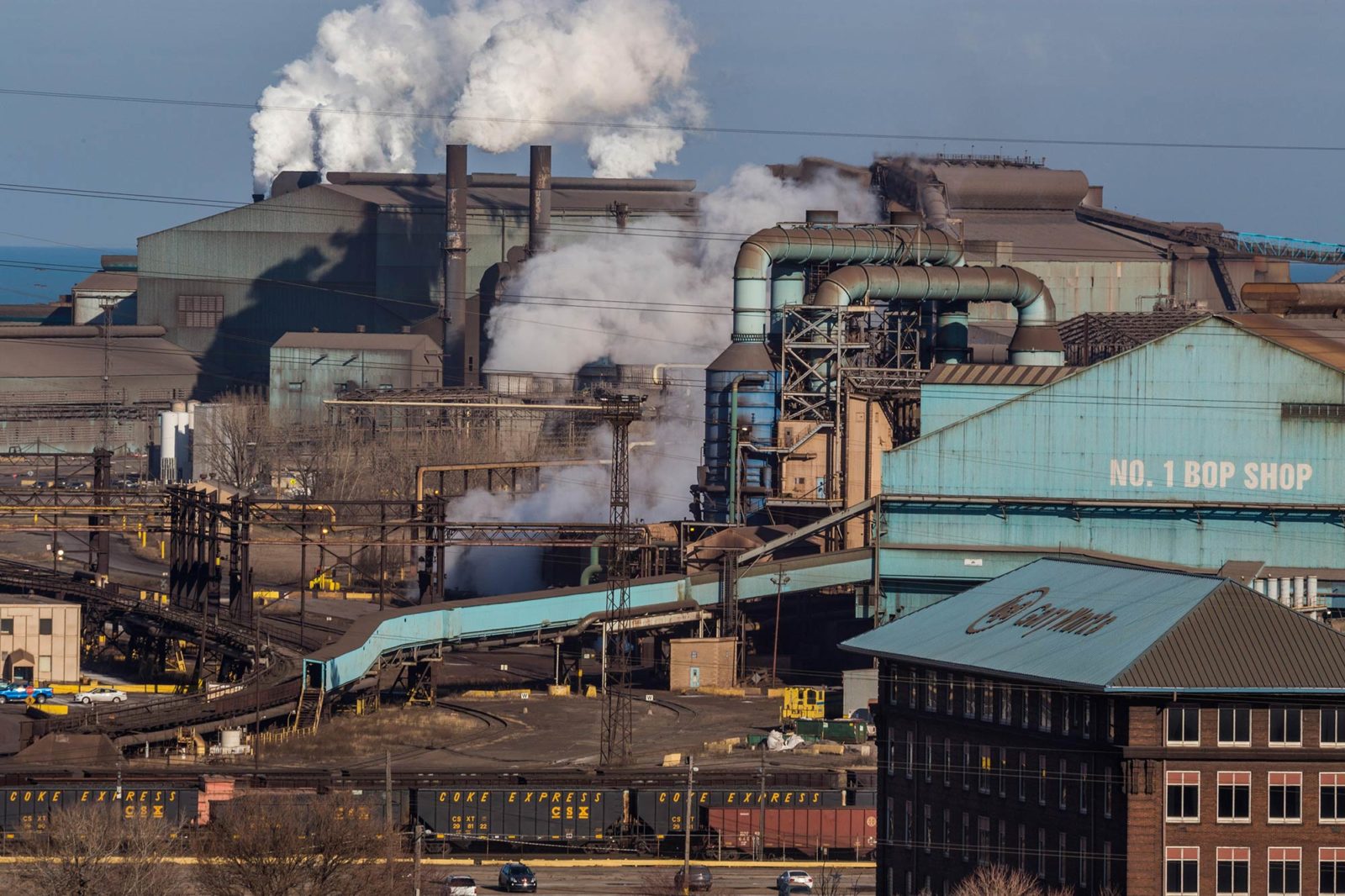Business
Storied US Steel To Be Acquired For More Than $14 Billion By Nippon Steel

Nippon Steel is acquiring U.S. Steel, a Pittsburgh steel manufacturer that played a significant part in the nation’s industrialization, in an all-cash deal worth around $14.1 billion.
The transaction is valued at around $14.9 billion when debt is assumed. According to World Steel Association projections for 2022, the combined company will be among the top three steel-producing companies in the world.
The price for U.S. Steel is roughly double what Cleveland Cliffs offered just four months ago. U.S. Steel, which turned down that bid, verified Nippon’s offered price early Monday.
That merger would have resulted in one of the top four producers outside China, which dominates global output. On Monday, executives from U.S. Steel were quizzed about a potential backlash from U.S. regulators over security concerns.
Storied US Steel To Be Acquired For More Than $14 Billion By Nippon Steel
“This is going to increase competition here in the United States with a great ally of the United States,” U.S. Steel CEO David Burritt responded. “It’s a great fit, and we don’t see it as a high-risk factor.” The risk is modest.
The company’s name and headquarters will remain in Pittsburgh, which was founded in 1901 by J.P. Morgan and Andrew Carnegie. It will become a Nippon subsidiary.
China and Chinese firms have dominated world production. According to the World Steel Association, China produces over 54% of the nearly 2 billion metric tons of steel globally annually.
In 2021, China’s Baowu Group, a state-owned iron business in Shanghai, will produce almost 120 million metric tons of steel. The United Nippon and U.S. firms will manufacture less than 90 million metric tons of steel, with Nippon producing most of that.
2022 the United States Steel Corporation will produce approximately 14.5 million tons.
The United States currently ranks fourth, trailing China, India, and Japan, and U.S. Steel’s blast furnace steel factories are among the most expensive to operate compared to more modern facilities that melt trash using arc furnaces.
However, U.S. steel factories with blast furnaces remain vital to U.S. manufacturing, particularly cars.
In anticipation of weaker steel demand, U.S. Steel idled one of its blast furnaces in Granite City, Illinois, earlier this year, citing a Detroit automakers’ strike.
Rising costs have pushed the sector’s consolidation this decade. Steel prices nearly doubled around the onset of the epidemic, reaching nearly $2,000 per metric ton by the summer of 2021 as supply networks became clogged, a symptom of growing demand for products and a failure to anticipate that demand.
On Monday, Nippon, which will pay $55 per share for U.S. Steel, stated that the acquisition will strengthen its manufacturing and technical capabilities. It will also increase Nippon’s production in the United States and strengthen its standing in Japan, India, and the ASEAN area.
Nippon stated that the acquisition will increase its total annual crude steel capacity to 86 million tons, allowing it to capitalize on rising demand for high-grade, automotive, and electrical steel.
“We are committed to honoring all of U.S. Steel’s existing union contracts,” Nippon President Eiji Hashimoto said in a prepared statement.
U.S. Steel CEO David Burritt said the transaction benefits the U.S. by “ensuring a competitive, domestic steel industry while strengthening our global presence.” During a conference call on Monday, he stated that the business will continue to run its mining and steel activities in the United States for domestic customers.
Nippon announced on Monday that it will uphold all collective bargaining agreements with the United Steelworkers and other employees and is dedicated to maintaining its connection with workers. Nippon has been present in the United States for nearly four decades, beginning with a joint venture with Wheeling-Pittsburgh in 1984, which later became a wholly-owned subsidiary.
The United Steelworkers International, on the other hand, instantly opposed the agreement.
The union “remained open throughout this process to working with U.S. Steel to keep this iconic American company domestically owned and operated, but instead it chose to push aside the concerns of its dedicated workforce and sell to a foreign-owned company,” said David McCall, president of United Steelworkers.
McCall stated that U.S. Steel and Nippon Steel did not contact the union about the agreement and that the union intends to use all of the provisions in its agreements to defend jobs.
“We also will strongly urge government regulators to carefully scrutinize this acquisition and determine if the proposed transaction serves the national security interests of the United States and benefits workers,” he said.
Since its inception in the early twentieth century, U.S. Steel has been a symbol of industrialization, and the domestic steel industry reigned globally before Japan and, later China became the main steelmakers over the last 40 years.
The corporation survived the Great Depression and contributed significantly to the United States’ efforts in World Wars I and II, delivering hundreds of millions of tons of steel for planes, ships, tanks, and other military equipment and steel for automobiles and appliances.
During the late 1970s and early 1980s, U.S. Steel curtailed output and sold off many other operations due to an energy crisis and successive recessions. With oversupply and a flood of lower-cost steel imports pulling down prices into the new century, the corporation reorganized in 2001 and spun off its oil division, which formed Marathon Oil Corp.
Storied US Steel To Be Acquired For More Than $14 Billion By Nippon Steel
The 64-story U.S. Steel Tower still dominates the Pittsburgh skyline, although U.S. Steel is no longer its primary tenant. That is UPMC, a local health system whose name is now emblazoned on the top of the tower.
The boards of both companies have approved the deal, and it should close in the second or third quarter of 2024. It still needs to be approved by U.S. Steel shareholders.
United States Steel Corp.’s stock jumped more than 27% on Monday.
SOURCE – (AP)
Business
Trudeau Accelerates Bond Selloff Over Mass Spending Fears

Prime Minister Justin Trudeau has accelerated bond selloffs, citing fears of a larger deficit over his GST giveaway. Investors were concerned he was returning to his free-spending strategy as an election loom.
On Thursday, Trudeau unveiled a C$6.3 billion ($4.5 billion) tax relief and rebate program. It includes a two-month moratorium on federal sales tax on various commodities such as Christmas trees, wine, toys, and books and a C$250 check for almost 19 million Canadians, or over half of the population.
The declaration looked to mark the end of a brief period of fiscal restraint, as Finance Minister Chrystia Freeland committed to contain budget deficits to prevent stoking inflationary pressures.
Now that inflation has returned to the Bank of Canada’s 2% target, policymakers have reduced the benchmark interest rate by 125 basis points since June.
Trudeau’s Liberal government sees an opportunity to dig deeper into the public purse, but some analysts believe investors are keeping a careful eye on the country’s debt.
Bonds continued to fall on Thursday following the announcement, as the 10-year benchmark yield rose 7 basis points to 3.457%. After retail data showed a rise in consumer spending on Friday, it increased by up to 3.488%.
As the Trudeau government considers additional fiscal spending, concerns about Canada’s financial situation persist.
Budget Shortfall
Freeland has yet to publish final spending and income figures for the fiscal year that ended in October. Parliamentary Budget Officer Yves Giroux predicts a deficit of C$46.8 billion, much exceeding Freeland’s self-imposed aim of a C$40 billion shortfall.
Despite promises to reduce deficits, the Trudeau government continues to increase expenditure. This year’s budget includes a new capital gains tax inclusion rate to balance the cost of new housing and social initiatives.
This sparked anger from investors and entrepreneurs but allowed Freeland to present a consistent deficit despite significant spending.
The recent declaration indicates that Trudeau’s government no longer feels restrained in its capacity to use economic stimulus to restore favor.
Pierre Poilievre’s Conservatives have led most surveys by roughly 20 points for over a year. They have pounded the prime minister on affordability and promised to reduce taxes, especially income taxes. An election is expected in late October 2025.
The sales tax break will run from December 14 to February 15. The left-wing New Democratic Party intends to support it but has stated that it will continue to advocate for its permanent implementation and expansion to include additional items.
Let the Bankers Worry
Following Trudeau’s announcement, traders in overnight swap markets reduced their bets that the Bank of Canada will drop interest rates by 50 basis points for the second time in December, lowering the odds to fewer than 25% by the end of Thursday. As of late Friday morning, the odds were less than 17%.
The announcement also encouraged several experts to improve their short-term projections for Canada’s GDP. Analysts at the Bank of Montreal predict that the country’s GDP will increase at a 2.5% annualized rate in the first three months of 2025, up from 1.7%.
Speaking to reporters on Friday, Trudeau praised his government’s approach to program expenditure, claiming it fosters optimism and possibilities for families and the middle class.
“We’re focusing on Canadians. “Let the bankers worry about the economy,” Trudeau stated.
Related:
Canada’s Budgetary Watchdog Warns Over Trudeau’s Spending
Business
Forced Sale Google Chrome Could Fetch $20 Billion

Antitrust officials in the US could force the sale of Google’s Chrome browser for up to $20 billion, demonstrating the tremendous worth of the world’s most popular web browser.
Bloomberg Intelligence attributes Chrome’s projected worth to its more than 3 billion monthly active users. The US Department of Justice is preparing to request a federal judge order the browser’s separation from Google’s parent company, Alphabet.
Chrome’s worth comes from its overwhelming 61% market share and its crucial role in Google’s advertising ecosystem. User data enables businesses to better target adverts, and the browser also acts as an important distribution mechanism for Google’s AI technologies.
Industry analysts think it may be difficult to find a suitable buyer. While tech behemoths like Amazon could finance the purchase, they would likely face regulatory scrutiny.
AI businesses, such as OpenAI, may emerge as more viable contenders. They could potentially leverage Chrome to broaden their reach and develop an advertising business.
“It’s not directly monetizable,” one analyst told Bloomberg. “It functions as a gateway to other things. It’s unclear how you would assess that in terms of pure revenue generation.”
Google opposes prospective sales, claiming that they will hamper innovation. The firm does not break out Chrome’s revenue individually in its financial filings, even though the browser’s user data plays an important part in the company’s principal revenue stream, advertising.
The DOJ’s suggestion follows Judge Amit Mehta’s August decision that Google had illegally monopolized the search industry. The judge will consider the recommended remedies at a two-week hearing in April 2024, with a final judgment due in August 2025.
Related News:
Appeals Court Delays Order For Google To Open Its App Store In Antitrust Case
Appeals Court Delays Order For Google To Open Its App Store In Antitrust Case
Business
Bitcoin Has Set a New Record And Is Approaching $100,000.

(VOR News) – Bitcoin broke beyond the $98,000 mark for the first time on Thursday as investors awaited Donald Trump’s second term as president. All of this happened during the day. As such, cryptocurrency has reached a significant turning point.
According to Coin Metrics, the top cryptocurrency was trading at $97,541.61 during the most recent trading session. Merchants provided this information. This suggests a price gain of more than three percent during the previous trading session.
When the period began, Bitcoin peaked at $98,367.00.
During the premarket trading session, MicroStrategy, a platform that facilitates cryptocurrency foreign exchange trading and serves as a bitcoin proxy, saw a 13% gain. Coinbase, on the other hand, had a 2% rise during that period. Furthermore, all of these increases occurred simultaneously.
The market value of Mara Holdings increased by 9%, which helped raise the valuation of mining companies overall. This was among the factors that led to the total rise.
Because of the widespread belief that President Trump will usher in a new era of prosperity for cryptocurrencies, one marked by more favorable laws and the possible creation of a national strategic bitcoin reserve, the price of Bitcoin has been rising steadily this month.
The most recent change brought about by the increase was the consequence of higher financing rates and more open interest in the futures market during Asian trading hours. The rise was the catalyst for this change. This action was prompted by the ensuing rush.
Throughout its lifespan, this legislation was the catalyst for this change for a variety of reasons. At the same time, spot market premiums decreased, according to CryptoQuant statistics. All of this happened at the same time.
Furthermore, a number of short liquidations have been sparked by the recent spikes in Bitcoin’s price, which has caused the price to rise overnight. As a result, the price has gone up much more. As a result, the total number of short liquidations has increased.
According to CoinGlass, these liquidations have effectively produced more than $88 million in capital during the last 24 hours.
Rob Ginsberg, an analyst at Wolfe Research, noted in a study released on Wednesday that “historically, following previous movements of this magnitude, Bitcoin has either entered a consolidation phase or disregarded the overbought condition as investors accumulate.” This phrase relates to the fact that this particular move has happened before.
Ginsberg stated this in reference to the evolution of Bitcoin over time.
Ginsberg’s answer makes reference to Bitcoin’s propensity to go through a period of consolidation. The comment also made reference to this.
He said, “Considering we are emerging from an extended consolidation phase and the price has reached a new high, it suggests that the pursuit is underway.”
The crucial psychological milestone of $100,000 is expected to be reached in the upcoming weeks, and this breakthrough could happen as early as Thursday. It seems likely that this level will be reached. There is a chance that this new development will take place.
This task will be carried out against the backdrop of this historical era. In addition, if Trump were to win a second term, federal budget deficits would increase, inflation would likely increase, and the dollar’s position in international affairs would change.
The administration that Trump would run during his presidency would be responsible for these consequences. All of these characteristics would positively impact the value of Bitcoin as a currency if they were taken into account in the order that they are presented.
The price of bitcoin had risen by more than 130% by the beginning of 2024.
SOUREC: CNBC
SEE ALSO:
PayPal’s Technical Challenges Are Affecting Thousands Of Customers Globally.
NVIDIA’s Earnings: The Leader In AI Chips Demonstrates Relentless Growth.
-
Politics2 weeks ago
Trudeau Orders Facebook to Block Australian Presser Video
-
Business4 weeks ago
Canada CBC News CEO Catherine Tait Recalled to Parliamentary Committee
-
Celebrity4 weeks ago
Shaun White’s Proposal To Nina Dobrev Was Romantic Gold
-
Tech4 weeks ago
Apple Launches The IPhone Into The AI Era With Free Software Update
-
News3 weeks ago
Pro-Khalistanis Sikhs Attack Hindu Temple in Brampton
-
Food4 weeks ago
Starbucks Is Making A Popular Add-On Free Of Charge


























